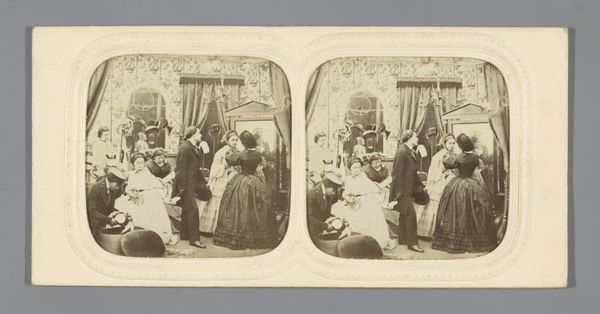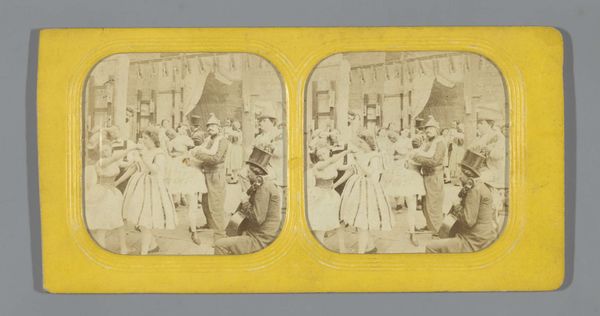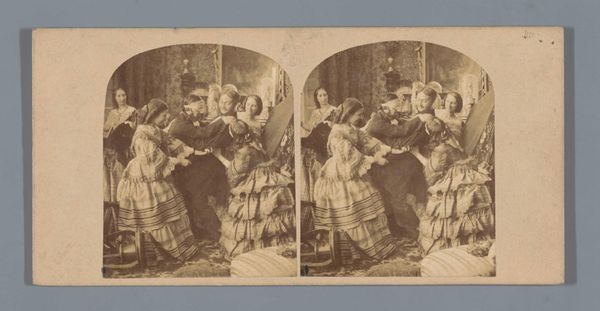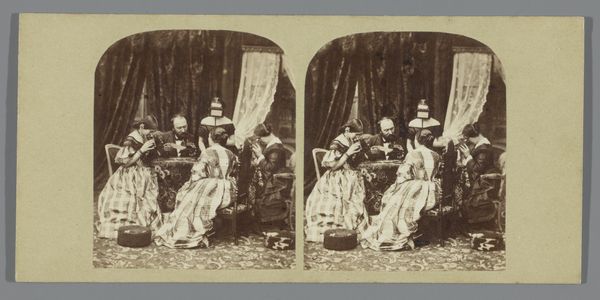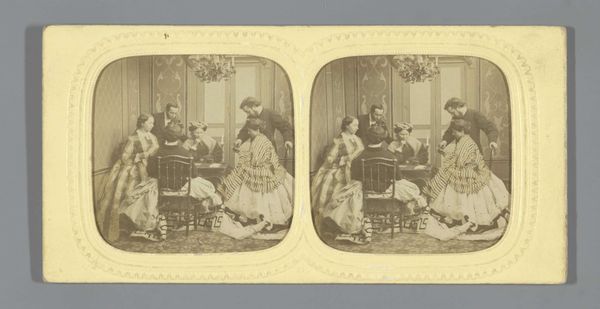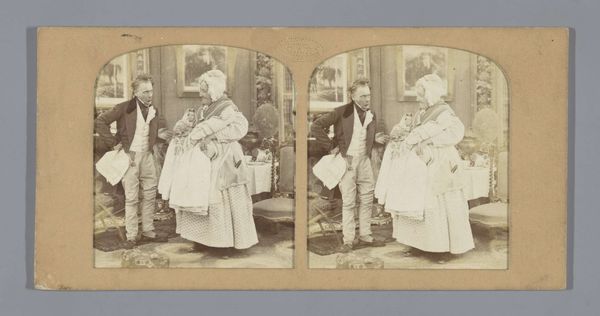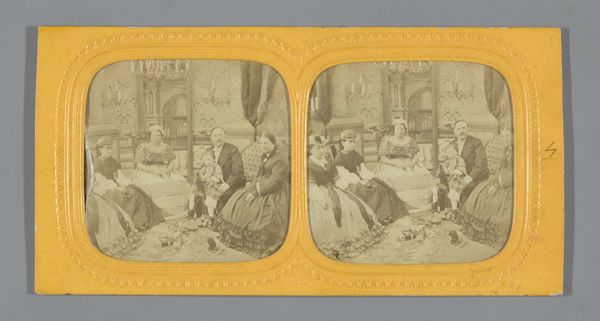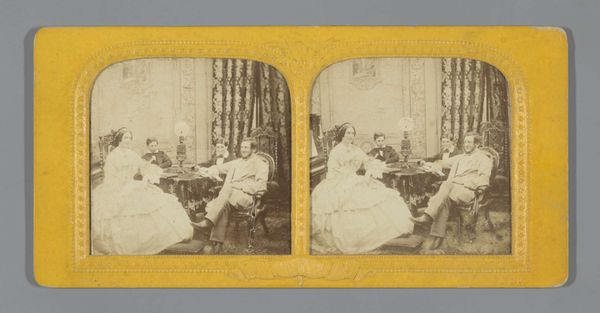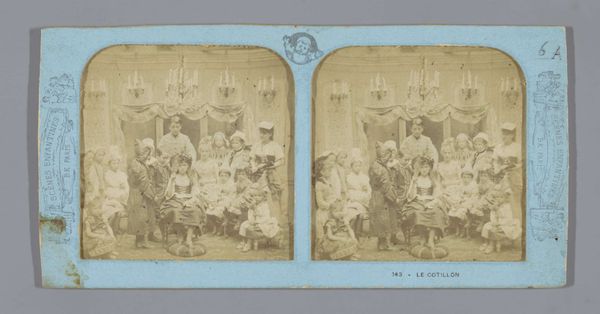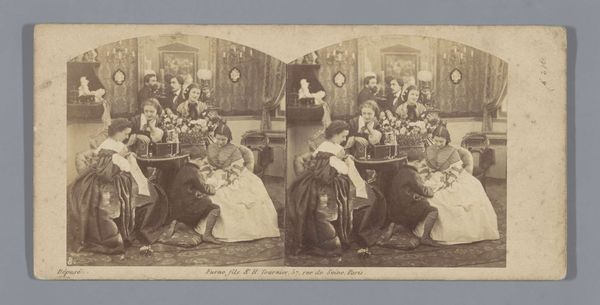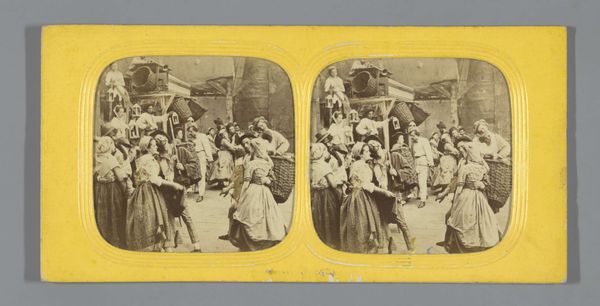
Dimensions: height 85 mm, width 170 mm
Copyright: Rijks Museum: Open Domain
Editor: This is "Dancing Couples in a Room with Arches and Chandeliers," a photograph, likely an albumen print, by F. Chevalier and A. Champeaux from around the mid-19th century. There's an undeniable sense of opulence in the image; I can almost hear the music! What historical narratives do you see present here? Curator: This image provides us a glimpse into 19th-century European social structures. Consider the restrictive gender roles—the women in their elaborate gowns, seemingly objects of display in contrast to the men in darker attire, positioned as active participants. Does this visual arrangement, intentionally or not, reflect the power dynamics of that time? Editor: Absolutely, I see the contrast now. The women’s attire almost merges them into a collective, while the men have a stark individuality. Do you think that this work can be considered documentary photography? Curator: In a way, yes. However, we must acknowledge that even early photography was curated. What is shown and, more importantly, what is omitted, speaks volumes. Who had access to these grand spaces and celebratory events? Who was excluded? Photography, in its inception, carried with it the same class biases as painting did. Editor: So, the photograph captures a certain reality, but one that’s deliberately framed. Are there any particular artists, artworks or even theorists that spring to mind? Curator: Think of Griselda Pollock's theories on space and representation, and how social structures define these roles. Or consider how Foucault's ideas on power are visually articulated in this photograph. It invites a deconstruction of not just what we see, but what is systematically absent. Editor: That is a great point. Thinking about this piece through a critical lens gives it a completely different meaning. It goes beyond being just a pretty scene. Curator: Precisely. And that, to me, is the continuing relevance of art history; using the past to illuminate the present.
Comments
No comments
Be the first to comment and join the conversation on the ultimate creative platform.
